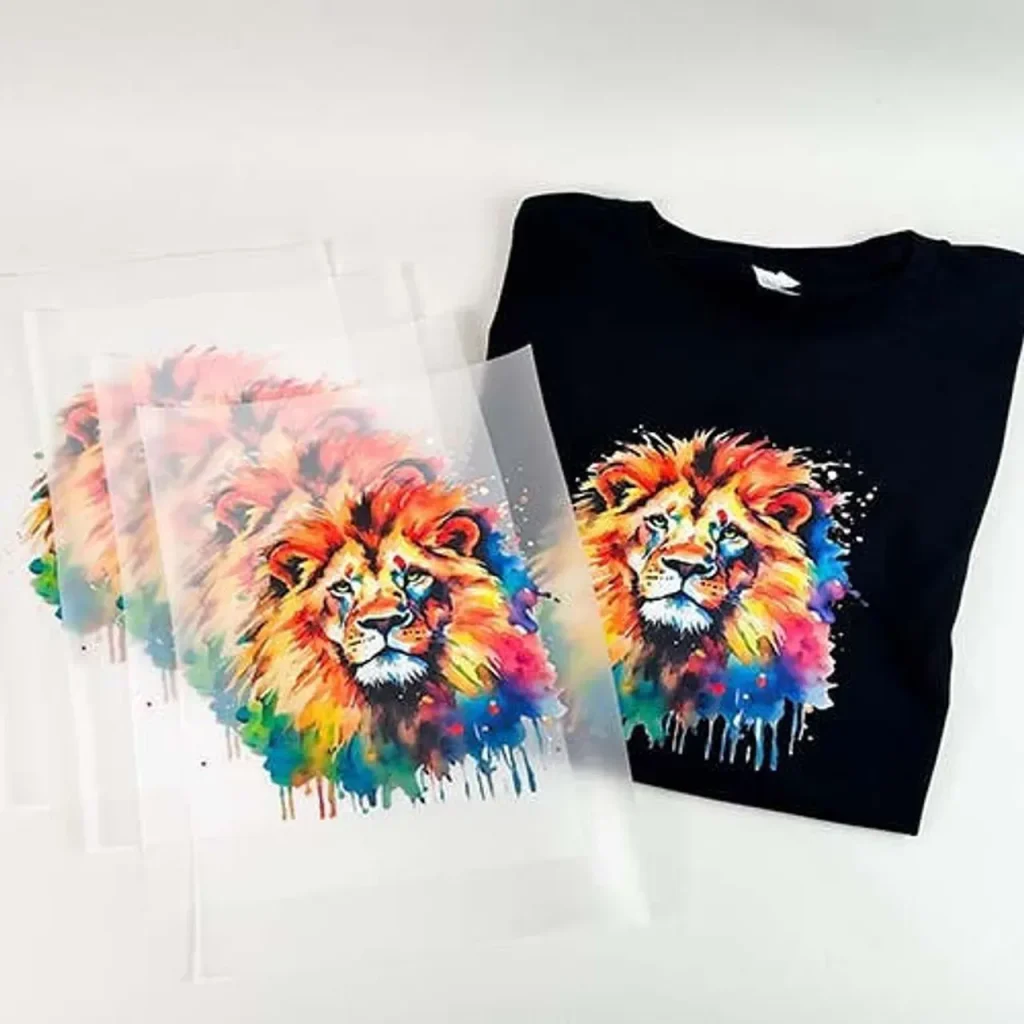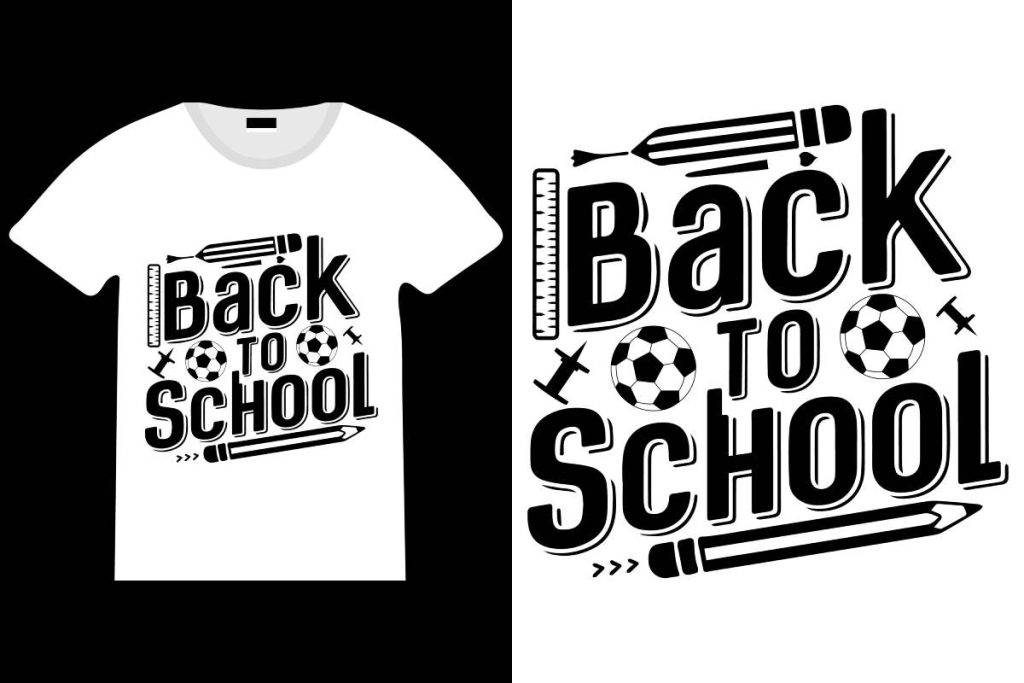In the ever-evolving landscape of custom apparel, DTF transfers are paving the way for a revolutionary approach to garment decoration. Standing for Direct-to-Film transfers, this innovative printing technology is quickly gaining traction among designers and small businesses as an effective solution for creating eye-catching fashion customization. DTF transfers combine quality and versatility, allowing intricate designs to be printed on various fabrics, making it ideal for entrepreneurs looking to tap into the personalized clothing market. As sustainability continues to be a driving force in consumer choices, many are turning to this eco-friendly method that minimizes waste while maximizing creative expression. Join us as we delve into the world of DTF transfers, exploring their benefits, market trends, and the exciting future they hold for the custom apparel industry.
The custom apparel industry is undergoing a transformation as cutting-edge techniques such as Direct-to-Film (DTF) printing come to the forefront. This method, often referred to as film transfers or innovative printing solutions, offers unique advantages that cater to the growing demand for personalized clothing. Utilizing state-of-the-art technology, DTF allows for high-resolution designs to be transferred onto garments, enhancing the scope for creativity in fashion customization. Moreover, with a strong focus on sustainable apparel practices, this technique aligns perfectly with the ethos of today’s environmentally-conscious consumers, further solidifying its place in the competitive landscape of custom fashion.
Exploring the Benefits of DTF Transfers
DTF transfers offer a multitude of advantages that are becoming increasingly appealing to custom apparel businesses. One of the standout features of this printing technology is its ability to produce high-quality prints with vibrant colors and intricate details. Unlike traditional screen printing, which can struggle with complex designs, DTF allows for remarkable precision and clarity. This means that designers can explore creative avenues they may have previously thought impossible, solidifying their brand’s identity in a world where visual appeal is paramount.
Another significant benefit of DTF transfers is their versatility in fabric application. Whether it’s cotton, polyester, or blended fabrics, DTF technology successfully adheres to various materials without compromising quality. This opens up a world of possibilities for apparel creators to expand their product lines, offering everything from t-shirts to performance wear. Consequently, businesses are not only able to diversify their offerings but also cater to specific consumer demands, which enhances customer satisfaction and brand loyalty.
Sustainability in Custom Apparel Production
As sustainability becomes a core principle for many brands, DTF transfers are gaining traction as an eco-friendly printing solution. The use of water-based inks is a significant contributor to this eco-consciousness, minimizing harmful chemical emissions compared to solvent-based alternatives. This is crucial as consumers today are more aware of their clothing’s environmental impact and increasingly prefer brands that align with their values of sustainability.
Additionally, the on-demand production model enabled by DTF printing significantly reduces waste. With the capability to produce items as orders come in, businesses can minimize unsold inventory and the associated environmental costs. This approach not only conserves resources but also resonates with customers who appreciate brands prioritizing sustainability, fostering a positive brand image and encouraging customer loyalty.
The Rise of E-commerce in Custom Apparel
The advent of e-commerce has revolutionized the custom apparel landscape, allowing small businesses and entrepreneurs to thrive. DTF transfers are particularly conducive to this shift, as they enable fast and efficient production of personalized items that appeal to online shoppers. With online platforms offering extensive customization options, customers can design their apparel without the need for a costly physical storefront.
Furthermore, the integration of social media in e-commerce has heightened consumer engagement and demand for unique apparel. As influencers showcase custom designs on platforms like Instagram and TikTok, the allure of tailored fashion continues to attract shoppers. DTF technology meets this growing demand by providing a quick turnaround for trendy items, ensuring that brands can capitalize on fleeting fashion trends and stay competitive in the ever-evolving market.
Direct-to-Film vs. Traditional Printing Techniques
When comparing DTF transfers to traditional printing techniques, several key distinctions stand out. DTF offers superior durability; prints can handle regular washing without fading or cracking, which is a notable issue for traditional methods like screen printing. This durability is critical for customers who expect their custom apparel to maintain its quality after multiple washes, directly influencing repeat purchases and brand loyalty.
Moreover, the initial investment for DTF printing is significantly lower than that required for traditional methods. This cost-effectiveness makes DTF an ideal choice for startups and small businesses that may not have the capital to invest in expensive printing equipment. As entrepreneurs navigate the challenges of launching a custom apparel line, the affordability of DTF can ease their entry into the market while still allowing them to deliver high-quality products.
Technological Innovations in DTF Printing
Recent innovations in DTF printing technology have significantly improved the production process and output quality, making it a top choice for custom apparel. Enhanced printer capabilities allow for sharper images and vivid colors, ensuring designs are not only eye-catching but also true to the creator’s vision. This advancement opens new doors for designers who wish to push creative boundaries and elevate their products within the fashion landscape.
Additionally, the merging of high-resolution printing with faster processing speeds caters to the growing demand for custom apparel. As fashion trends shift at a rapid pace, businesses equipped with cutting-edge DTF technology can quickly adapt to market demands, satisfying customers who crave timely and trendy apparel. This ability not only enhances company productivity but also secures a competitive edge in an overcrowded marketplace.
Future Trends in Custom Apparel and DTF Technology
The future of custom apparel is intrinsically tied to advancements in DTF technology. As more brands integrate this printing method into their operations, we can expect significant changes in how apparel is designed, produced, and marketed. Upcoming trends indicate a growing reliance on automation in DTF practices, which will minimize manual labor and streamline production processes. This efficiency could lead to faster turnaround times and the ability to meet heightened consumer demands for personalization.
Furthermore, as DTF transfers become more mainstream, we can anticipate an expansion in the variety of options available to consumers. Brands may partner with artists or influencers to provide exclusive designs, creating unique clothing items that reflect individual tastes. This trend not only caters to the desire for distinctiveness in fashion but also encourages collaboration among creators, fostering a vibrant community around custom apparel production.
Frequently Asked Questions
What are DTF transfers and how are they used in custom apparel?
DTF transfers, or Direct-to-Film transfers, are a modern printing technology that allows for high-quality designs to be printed onto a special film. This film is then applied to garments using heat, making it ideal for custom apparel. DTF transfers enable vibrant colors and intricate details to be printed on various fabric types, making them a versatile choice for fashion customization.
What are the benefits of using DTF printing technology over traditional screen printing?
DTF printing technology offers several benefits over traditional screen printing, including enhanced durability of prints, cost-effectiveness for small batch production, and faster production times. DTF transfers use water-based inks, resulting in a more sustainable printing process, aligning with the growing demand for eco-friendly practices in custom apparel.
How do DTF transfers support sustainable apparel initiatives?
DTF transfers support sustainable apparel initiatives by utilizing water-based inks, which reduce the environmental chemical footprint. Additionally, DTF printing allows for on-demand production, significantly decreasing inventory waste and preventing the production of unsold merchandise, making it an eco-friendly solution in the fashion customization industry.
What types of fabrics are compatible with DTF transfers for custom apparel?
DTF transfers can be applied to a wide range of fabrics including cotton, polyester, and hybrid blends. This compatibility allows designers to explore endless creative possibilities in custom apparel, making it suitable for various garment types from t-shirts to hoodies.
Why is there growing market demand for DTF transfers in the custom apparel sector?
The growing market demand for DTF transfers in the custom apparel sector is driven by consumers’ increasing desire for personalized fashion. As e-commerce expands and social media influences trends, DTF technology provides an efficient and high-quality solution for meeting the needs of buyers seeking unique and customizable apparel options.
How has technology improved the efficiency of DTF printing in fashion customization?
Recent advancements in DTF printing technology have significantly improved efficiency and quality in fashion customization. Enhanced ink formulations deliver more vivid colors and sharper images, while faster printing technologies cater to the fast-paced demands of the fashion industry, allowing for quicker turnarounds and increased customer satisfaction.
| Key Point | Details |
|---|---|
| What are DTF Transfers? | A printing technology that prints high-quality designs onto film, which is then applied to fabric using heat. |
| Reasons for Popularity | Combines benefits of screen and digital printing, offering versatility for various fabric types and intricate designs. |
| Market Growth | Projected global market for custom apparel to reach $78 billion by 2024, driven by consumer demand for personalization. |
| Advantages of DTF Transfers | Durability, cost-effectiveness, small batch production, and eco-friendliness compared to traditional methods. |
| Future Trends | Increased automation and expanded market options, leading to greater efficiency and customization. |
Summary
DTF transfers are redefining the landscape of custom apparel, establishing themselves as a premier choice for businesses seeking high-quality prints with incredible durability and versatility. By leveraging advanced printing technology that accommodates a variety of fabrics, DTF is not only meeting the growing consumer demand for personalized clothes but is also enhancing the production efficiency for both large brands and small businesses. As sustainability becomes increasingly paramount, DTF’s environmentally friendly practices further bolster its appeal in the fashion industry. Looking ahead, the integration of DTF technology will likely continue to shape the future of apparel printing, driving innovation and personalization in the custom apparel market.



